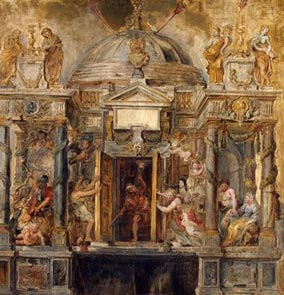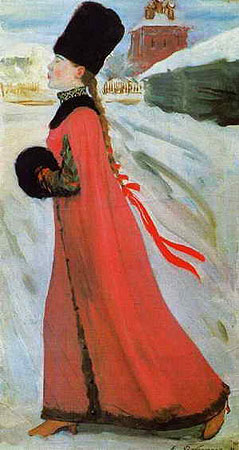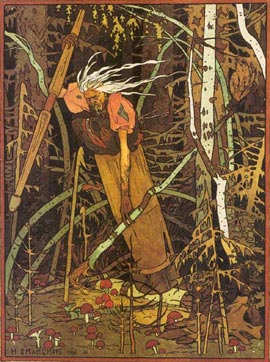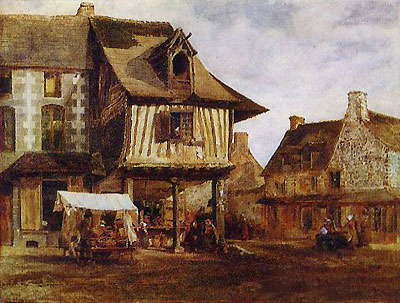Baroque
 Baroque – (Portuguese. Baroco – freaky, bad, wrong, spoiled). The term “baroque” has many meanings in the history of art. Among them are narrower, to indicate artistic styles in the art of various countries of the XVII-XVIII centuries, or broader ones – to define the ever-renewing tendencies of restless, romantic attitudes, thinking in expressive, dynamic forms, or generally as a poetic metaphor: “Baroque man” , “Baroque”, “Baroque world”, “Baroque life”. Finally, in every time, almost every historical art style finds its “baroque period”.
Baroque – (Portuguese. Baroco – freaky, bad, wrong, spoiled). The term “baroque” has many meanings in the history of art. Among them are narrower, to indicate artistic styles in the art of various countries of the XVII-XVIII centuries, or broader ones – to define the ever-renewing tendencies of restless, romantic attitudes, thinking in expressive, dynamic forms, or generally as a poetic metaphor: “Baroque man” , “Baroque”, “Baroque world”, “Baroque life”. Finally, in every time, almost every historical art style finds its “baroque period”.
In the most famous meaning of the Baroque is the historical artistic style, which became widespread initially in Italy in the middle of the XVI-XVII centuries, and then partially in France, as well as in Spain, Flanders and Germany of the XVII-XVIII centuries. The Baroque Style is remarkable for the fact that for the first time in the history of world art, it would seem that the seemingly incompatible components: Classicism and Romanticism. Until the turn of the 16th-17th centuries, Classicism and Romanticism existed as two independent, in all opposing artistic directions, two tendencies of artistic thinking.
The slang term “Baroco” was used by Portuguese sailors to denote irregular shaped irregular pearls, but in the middle of the 16th century. it appeared in colloquial Italian as a synonym for everything coarse, clumsy, fake. In the professional environment of the French art workshops baroquer – meant to soften, dissolve the contour, make the form more soft, beautiful. As an aesthetic evaluation, this word came to be used in the 18th century.
The formation of the historic Baroque style is associated with the crisis of the ideals of the Italian Renaissance in the middle of the 16th century. and the rapidly changing “picture of the world” at the turn of the 16th — 17th centuries. At the same time, the previous century was so strong in artistic terms that it could not “disappear altogether” or end abruptly at any particular stage. And in this contradiction is the essence of all the conflicts of the Baroque artistic style.
The Baroque architecture is syncopated rhythms of mass collisions, confrontation of inert volume and dynamic sensation of space, materiality of the wall and illusory depth, the oncoming step of the verticals of the columns of repeatedly ramified horizontal contours of the cornices. And one more expressive means of Baroque: the improbability of scales, inhuman measurements of overly enlarged details.
The most radical of the Roman Baroque is called – “Jesuit style”. His main work is the church Il Gesu in Rome of the architect Giacomo della Porta (1575). The style of the Jesuits is associated with the movement of the Counter-Reformation and the idea of absolutism of the Roman Catholic Church.
“Jesuit Baroque” – a mystical, irrational in spirit and illusory-naturalistic in form. It became widespread not only in Italy and Spain, where its influence was particularly strong, but also in Eastern Europe. Catholic Baroque began to spread rapidly in Poland, Western Ukraine, the Baltic States and Belarus. Jesuits built churches and colleges (Jesuit schools) on the model of the Roman, sometimes directly from the drawings sent from Rome. Their influence on local artists was also great. Catherine II permitted the activities of the Jesuit Order in Petersburg, and, despite its official abolition in 1773, the Jesuits continued to operate until 1815-1820. they are not completely expelled from Russia.
The Renaissance, so rapidly taking place in Italy, less affected the deep layers of medieval culture in northern Europe. It was replaced by the era of religious reformation. All questions of faith were declared non-negotiable, and transferred to the area of subjective emotional experience. This movement led the Jesuits. That is why the “pathos of the scenery” and the mysticism of the Italian Catholic Baroque so easily and organically penetrated the German soil at the end of the 16th century, where they merged with the mysticism of the late Gothic. As a result, the “baroque gothic” or “gothic baroque” was born. Both styles combined irrationality, mysticism, destructiveness and a picturesque, expressive sense of form. Ideas of Baroque penetrated into the painting, primarily related to architecture. Ceiling paintings – a favorite type of Baroque art. Their main task is to create a mystical sense of space, in which the usual ideas about the real length, specificity of volume, color, light and plane are lost. In baroque interiors, the ceiling of the final element turns into a kind of illusory, upward space.
The second after beauty in Baroque aesthetics is followed by the category of grace (lat. Gratia – charm, elegance) or cortesia (Italian. Cortesia – politeness, tenderness, warmth), which corresponds to the visual qualities of movement, plasticity, variability. Another important category – “decorum” – the selection of relevant topics and stories.



